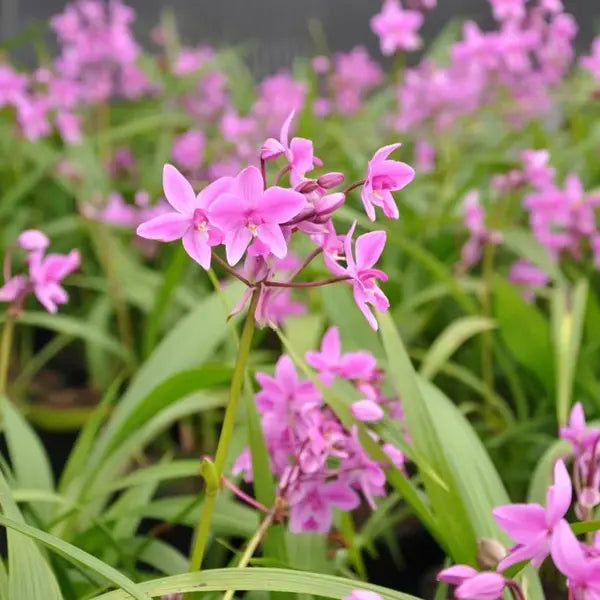
Ground Orchid Pink
Selling Size : Single Plant | Pot Included | Secure Packing
The Ground Orchid Pink, often a variety of Bletilla striata, is a popular and relatively easy-to-care-for terrestrial orchid. Its beautiful pinkish-purple, cattleya-like flowers make it a great addition to gardens and containers.
Here is a guide to its care Ground Orchid Pink :
Light
Partial Sun to Part Shade: Ground orchids thrive in partial sun, receiving a few hours of filtered light, especially in the morning.
Avoid Direct Afternoon Sun: Harsh, direct sunlight can scorch the leaves. An ideal location is one that gets morning sun and afternoon shade.
Indoor Care: If grown indoors, an east-facing window is a good choice to provide the right amount of light.
Soil and Planting
Well-Draining Soil: The most critical factor is well-draining soil. Ground orchids have shallow but extensive root systems and are susceptible to root rot if the soil remains waterlogged.
Rich in Organic Matter: Use an organically rich, loamy soil mix. You can create a mix with components like peat moss, perlite, and bark.
Planting: Plant the corm-like bulbs about 3-4 inches deep and spaced 4 inches apart. If planting in a container, choose one with ample drainage holes and enough space for the roots to grow. Terracotta pots are a great option as they help wick away excess moisture.
Watering
Consistent Moisture: Keep the soil consistently moist during the growing season (spring to early fall).
"Golden Rule": Water when the top layer of soil feels dry to the touch.
Reduce Watering in Winter: When the plant enters its dormant period in late fall and winter, reduce watering significantly. The plant can go without much water during this time.
Temperature and Humidity
Temperature Range: Ground orchids are generally hardy and can tolerate a wide temperature range (0−38°C).
Hardiness Zones: They are typically hardy in USDA Zones 5-9. In colder zones (below Zone 5), it's best to grow them in containers and bring them indoors for the winter or provide a thick layer of mulch for insulation.
Humidity: They prefer humid conditions, which mimics their native tropical environment.
Fertilization
During Growing Season: Fertilize every 2-4 weeks during the active growing season (spring and summer) using a balanced, water-soluble orchid fertilizer diluted to half-strength.
Compost: At the beginning of the growing stage, you can add some compost to the soil to provide nutrients.
Dormancy: Stop fertilizing during the dormant period.
Other Care Tips
Winter Care: In regions with cold winters, the foliage will die back. Mulch the plant to protect the corms from freezing. Alternatively, if in a container, bring it indoors to a cool, frost-free location.
Pruning: Prune dead or yellowing leaves to maintain the plant's health and appearance.
Pests: Keep an eye out for common pests like aphids, mealybugs, and snails.
Propagation: Ground orchids can be easily propagated by division in the fall or early spring when the plant becomes overcrowded.
Reblooming: For best results, ensure the plant gets enough light, is not overwatered, and has a dormant period in winter. Mature plants are more likely to bloom consistently.

